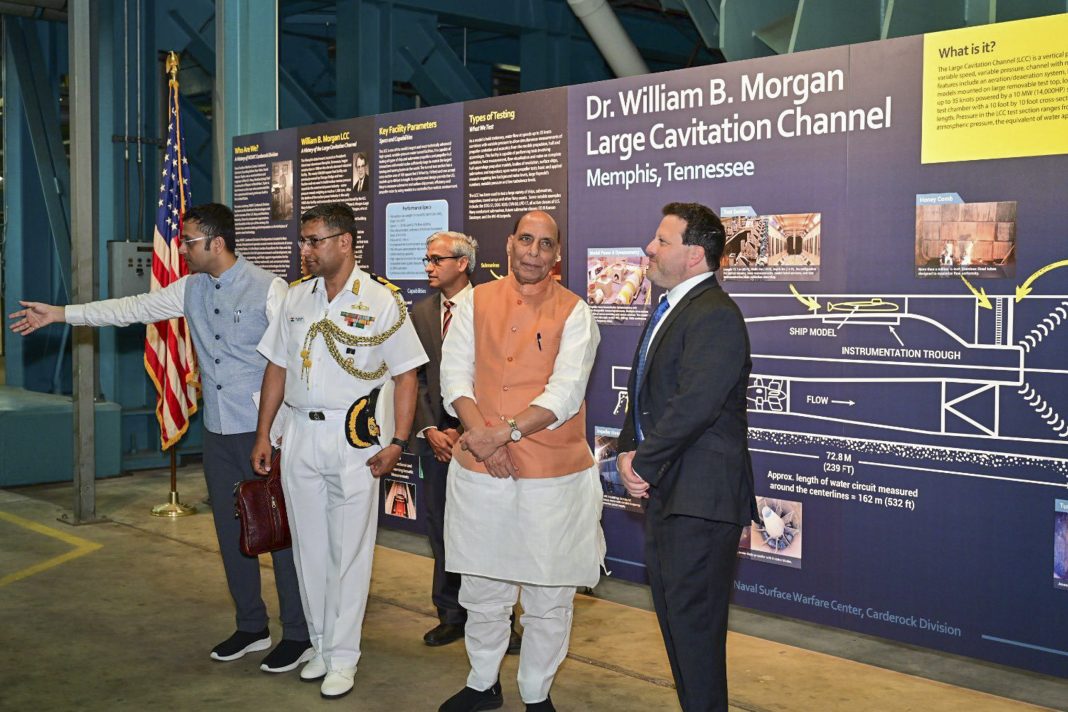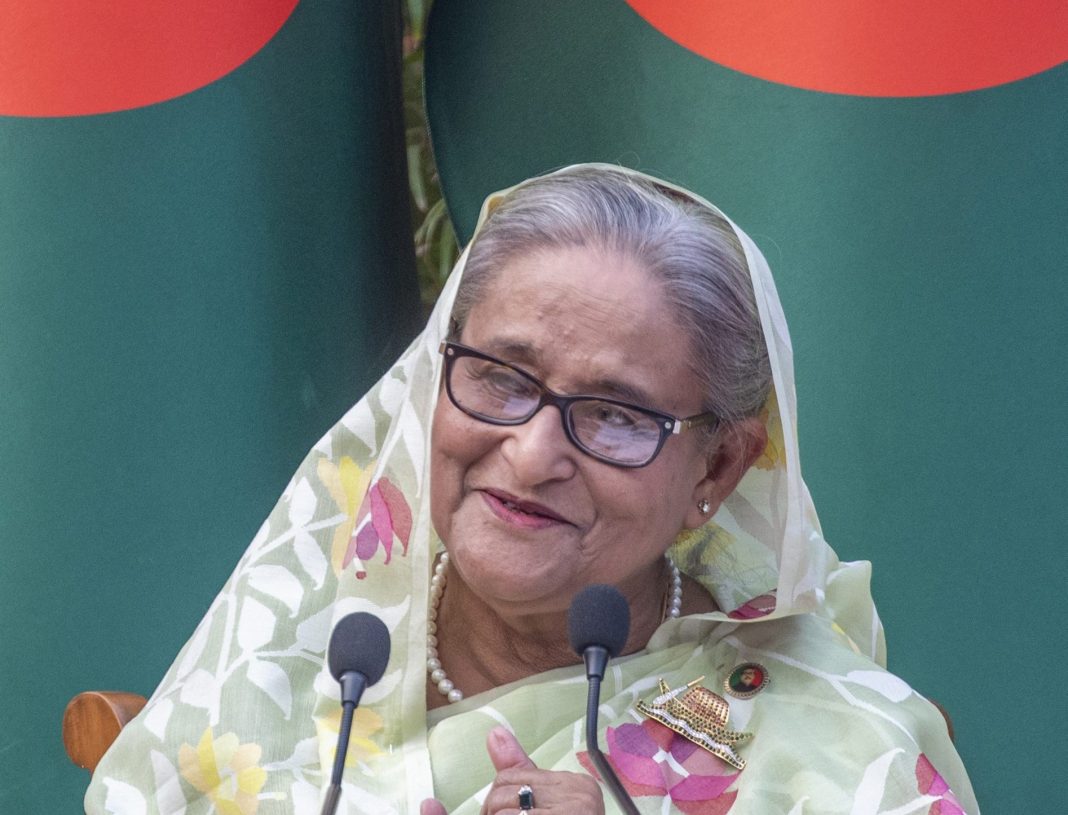Defence Minister Rajnath Singh has visited one of the world’s largest and most technically advanced water tunnel facilities for testing submarines and other naval weapons in the US, amidst a proposal for the establishment of a similar facility for indigenous design and development in India.
Singh is in the US on a four-day official visit to further boost the comprehensive global strategic partnership between the US and India.
Singh, as a part of his ongoing tour to the US, visited the William B Morgan Large Cavitation Channel (LCC) in the Naval Surface Warfare Centre (NSWC) in Memphis, Tennessee.
The LCC is one of the world’s largest and most technically advanced water tunnel facilities for testing submarines, torpedoes, naval surface ships and propellers.
Singh was briefed at the facility and he witnessed an actual tunnel experiment. The discussions also intend to support the ongoing proposal for the establishment of a similar facility for indigenous design and development in India, the Press Information Bureau said in an official press release on Singh’s visit to the LLC.
The LLC is capable of testing all types of ship and submarine propellers and propeller-hull interactions with model scales sufficiently large to match the largest towing and turning basins in the world.
The LCC is part of the Naval Surface Warfare Center Carderock Division, one of the Navy’s preeminent research and development facilities that specialises in critical ship and submarine design.
The Indian delegation was greeted by Deputy Under Secretary of the Navy for Policy Anne Gebhards and Naval Surface Warfare Center and Undersea Warfare Center Commander Rear Adm. Todd Evans.
Earlier, Singh visited the Naval Surface Warfare Centre at Carderock, Maryland.
Singh, in a post on X, said that he witnessed the pathbreaking experiments at the facility.
“India and the US look forward to work together and benefit from each other’s experiences,” he wrote after he visited the top American naval facility on Saturday.
Located in West Bethesda, NSWC Carderock Division’s Headquarters hosts world-class laboratories, modelling, and simulation facilities that are vital to the success of the Navy and maritime industry.
Activities at NSWC Carderock Division include research, engineering, modelling, and testing for the Navy’s ships and their operating systems.
Earlier during the visit, Singh met the US National Security Advisor Jake Sullivan and Secretary of Defence Lloyd Austin.
Austin praised the momentum behind the US-India relationship during the meeting with Singh.
He noted the countries’ increased cooperation on a range of defence issues, including efforts to strengthen critical supply chains and interoperability between their militaries.
“We share a vision of a free and open Indo-Pacific, and our defence cooperation continues to grow stronger and stronger,” Austin said, amidst China’s assertive moves in the Indo-Pacific region.
“We’re expanding our defence industrial ties and working to co-produce more capabilities and strengthen supply chain resilience,” he said.
He said that the countries have increased operational cooperation across all domains and highlighted India’s participation in this summer’s Rim of the Pacific, a large-scale exercise led by the US Navy in Hawaii that brought together 29 partner nations.
The Indian navy remains an important security provider in the Indian Ocean, Austin said.
“Indian sailors have helped mariners in distress and defended global commerce. So, we are committed to deepening naval cooperation, to doing more together with unmanned technology, and to strengthening undersea domain awareness,” he said.
Singh said the growing cooperation covers “all areas of human endeavour.”
The defence minister noted the robust people-to-people ties, shared democratic values, and the convergence of interests between the US and India on a range of issues.
Austin and Singh’s meeting came a day after the countries finalised an agreement aimed at mitigating unanticipated supply chain issues to meet national security needs.
Under the non-binding “security of supply” arrangement, the United States and India have agreed to provide priority support for goods and services that promote national defence.
Meanwhile, Secretary of State Antony Blinken has approved a possible Foreign Military Sale to India of Anti-Submarine Warfare Sonobuoys and related equipment for an estimated cost of USD 52.8 million.
The Defence Security Cooperation Agency delivered the required certification notifying Congress of this possible sale on Friday.
This proposed sale will support the foreign policy and national security objectives of the United States by helping to strengthen the United States-India strategic relationship, the statement said.
It will help in improving the security of a major defence partner which continues to be an important force for political stability, peace, and economic progress in the Indo-Pacific and South Asia regions, it said.
The proposed sale will improve India’s capability to meet current and future threats by enhancing its capacity to conduct anti-submarine warfare operations from its MH-60R helicopters, it added.
India, it said, will have no difficulty absorbing this equipment into its armed forces.
The proposed sale of this equipment and support will not alter the basic military balance in the region.
There are no known offset agreements proposed in connection with this potential sale. The statement said there will be no adverse impact on US defence readiness as a result of this proposed sale. (PTI)




